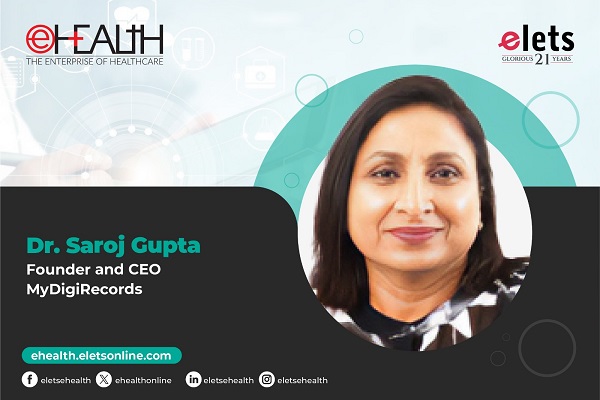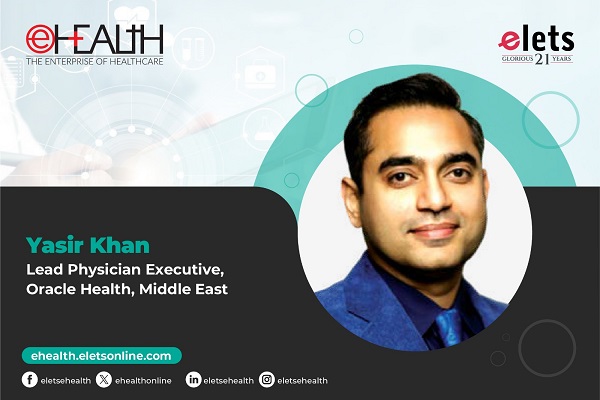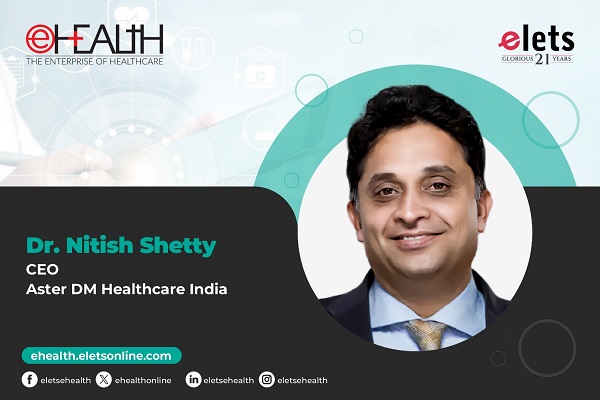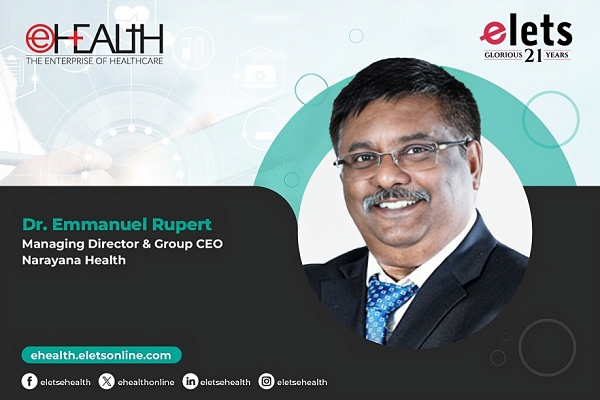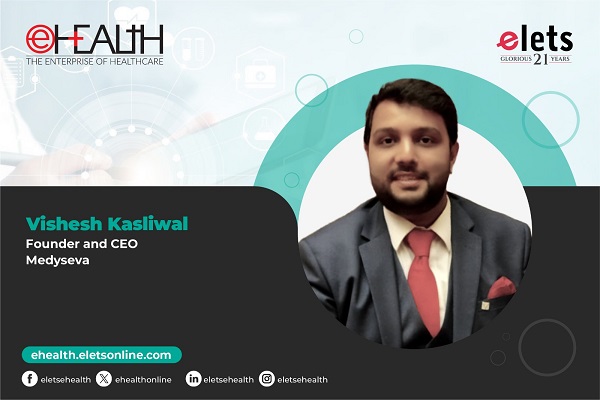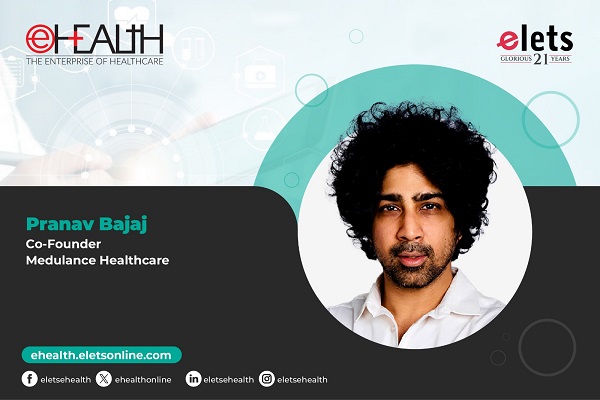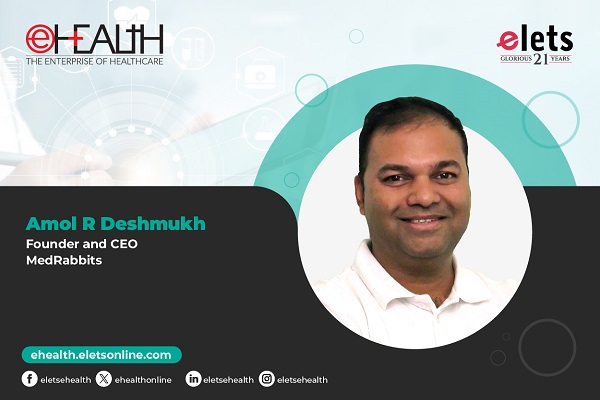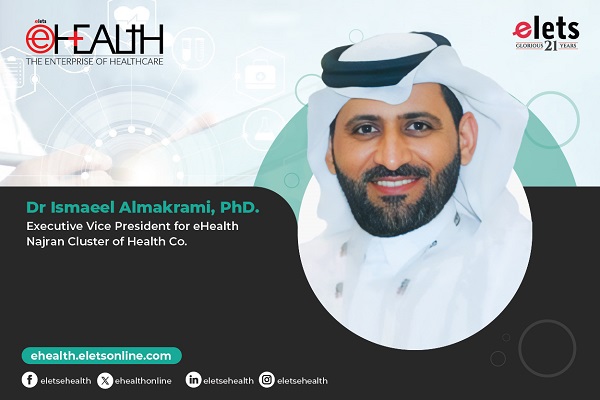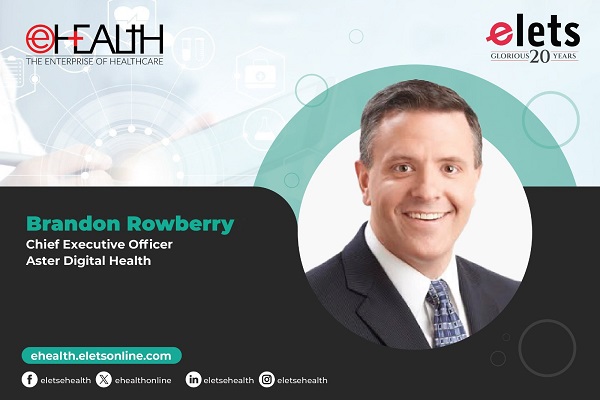The Seventh Annual Baramati Initiative on ICT and Development, which took place during 15-17 March in Baramati, Maharashtra, gave eHealth the opportunity to interact with a cross-section of experts, who are doing significant work in the field of e-Health.
During the high-powered meet, eHealth met with Chris S. Thomas, the Chief Strategist of Intel Corporation, for an exhaustive one-to-one interview. The interaction not only helped to shed light on Intel’s multiple endeavours in the healthcare sector, but also gave an insight into the tremendous potential that e-Health holds in the years to come. Excerpts from the interview…….

 Kindly tell us something about Intel’s initiatives in the domain of healthcare in general?
Kindly tell us something about Intel’s initiatives in the domain of healthcare in general?
Chris S. Thomas: For years, Intel has been proactively researching on healthcare needs and working on integrated technology solutions to address healthcare challenges. It has been Intel’s mission to enable individuals, their families, and clinicians to connect to the right information at the right time, which can facilitate them to make better and more informed healthcare decisions.
Utilizing Intel’s technologies in healthcare solutions is allowing digital information to be shared securely among hospitals and healthcare systems, pharmaceutical companies and other stakeholders of healthcare community. From powerful, reliable and energy-efficient (and thus cost-efficient) servers for the hospital data center, from mobile devices for remote monitoring to decision support devices at the point of care, our technologies are becoming more and more relevant to healthcare.

Having the right information at the point of decision is critical to improving patient safety, reducing errors and easing workloads. To support those goals, Intel Corporation’s Digital Health Group has combined the insights of ethnographers, technologists and clinicians to pioneer a new category of mobile computing platforms, designed specifically for clinical hospital environments-mobile clinical assistant platforms.
As far as the road ahead is concerned, we have conceptualized some inroads in home healthcare, which has the potential to change the face of healthcare of tomorrow. Our innovations could help the chronically ill and ageing patients, who need day-to-day monitoring. Intel is developing personal health solutions, which could help people to monitor their chronic ailments from home on a continual basis by keeping a tab on their various health parameters like temperature, heart rate, blood pressure – relayed in real-time to their doctors/clinics for continuous remote monitoring and on-time intervention. This can give a much needed impetus to the hitherto neglected area of preventative care.
 Can you tell us something about the background of Intel’s commitment in healthcare?
Can you tell us something about the background of Intel’s commitment in healthcare?
Intel’s commitment to healthcare started way back in 1999 with the formation of the Proactive Health Research project. It is a multi-disciplinary team, engaged in the research of people’s healthcare needs and integrated technology solutions. Today, the Proactive Health Lab has evolved into Intel’s Health Research and Innovation Lab, which comprise an integrated team of social scientists, designers and systems engineers.
The members of this interdisciplinary team go to homes, hospitals, and doctors’ offices, living or co-locating with patients, doctors and nurses, over long periods of time, to observe and understand their specific needs. They then respond to those needs by designing and developing prototypes of new technology solutions, which are tested in a variety of healthcare settings, from hospital to home. This work serves as the focal point for platform development by Intel’s product teams, helping ensure that product design centers on real needs of people.
 Could you please elaborate on the World Ahead initiative of Intel and tell us how this initiative can have ramifications in the Indian healthcare scenario?
Could you please elaborate on the World Ahead initiative of Intel and tell us how this initiative can have ramifications in the Indian healthcare scenario?
World Ahead initiative of Intel aims to bridge the digital divide by connecting an additional one billion new users of IT in the next few years. One of the chief objectives of Intel’s World Ahead Program is to provide greater accessibility of IT to the world’s underserved population, by rapidly creating access to affordable PCs that are tailored to meet their needs. In addition to developing specialized platforms, Intel is also working with governments across the globe to deliver affordable PC purchase programs that give citizens and businesses easier access to trusted Intel-based computers, as well as to develop localized content for the next one billion new users. In order to achieve these objectives, World Ahead Program is founded on four pillars of Accessibility, Connectivity, Education and Content.
In India’s healthcare sector, the rippling effect of this mammoth endeavour just cannot be overstated. We want to make World Ahead Program a success in India, but for that we need comprehensive healthcare infrastructural support and strategic facilitation from government. Intel is fostering connectivity (primarily via WIMAX broadband deployments) to reach cities, suburban and rural communities across the globe in a cost-effective manner, and India is high on our agenda in this regard.
Though I agree the ution of WIMAX technology is still in its nascent stage in India, but there is a positive attitude towards WIMAX in the country. With the spread of WIMAX, telemedicine will get a fillip in India, and percolate from urban elite echelons to rural areas. Without WIMAX, it is hard to make telemedicine an effective tool, as broadband connectivity is crucial to the transmission of medical images.
 What do you think are the impediments towards fast implementation of WIMAX technology in India?
What do you think are the impediments towards fast implementation of WIMAX technology in India?
I think it is more a political and business issue than a technical issue. Intel has strong advocacy for WIMAX standard as it is a relatively inexpensive proposition, at the same time entailing more bandwidth to cater to the singular needs of the healthcare sector. We are looking for initiatives from both government and private players to make this innovative technology augur development dividends. It should be borne in mind of policy makers, that world over, WIMAX is poised to bring wider and better Internet connectivity, boost economic activity, bring new livelihood options and deliver greater quality of life.
 Can you elaborate on the much acclaimed Baramati initiative of Intel, which has not only accrued significant development dividends to the people of this small town, but has also helped it to find a niche position in the world’s IT map?
Can you elaborate on the much acclaimed Baramati initiative of Intel, which has not only accrued significant development dividends to the people of this small town, but has also helped it to find a niche position in the world’s IT map?
The pilot project in Baramati has been a great success story. The pilot was commissioned in November 2006, under which the community health centre was virtually connected with the Bangalore-based cardio-specialty hospital – ‘Narayana Hrudyalaya’ and the Madurai-based ‘Aravind Eye Hospital’. This has helped people of Baramati to remotely avail the expertise of specialists from Madurai and Bangalore at very affordable rates. This facility of tele-diagnosis from Baramati has so far addressed the heart and eye problems of more than 2000 people living around this area.
Thanks to ICT and committed clinical partners, now it takes only about eight minutes for the ECG results to come from Bangalore to Baramati, while it takes just about an hour for reports to come from Aravind Eye Hospital in Madurai. The partners who helped make this happen include SN Informatics-the software partner, Schiller Healthcare-medical equipment partner, Vidya Pratishthan’s Institute of Information Technology (VIIT)-technology and local coordination support.
The tele-diagnostics solution is the first step towards automating the operations of the community hospital. Automation with a bit of business process change would bring about a significant improvement in the productivity and transparency of the working of the hospital. In turn, this would tran-slate to improved quality of care. This is one pertinent example of tele-diagnostics reaching the grass roots levels.Besides conceptualizing this initiative, Intel has also provided the technological support, which includes computing infrastructure, medical equipments and training.
 How do you assess India’s future in telemedicine and what are the lacunae to be tackled in order to achieve greater success in the near future?
How do you assess India’s future in telemedicine and what are the lacunae to be tackled in order to achieve greater success in the near future?
India, which is emerging as a knowledge economy to reckon with, has great prospects in the domain of telemedicine. Sustained research on development of peripheral medical devices which can be linked to a PC, and the cost-effective connectivity (for transmission of images with high bandwidth) are the key to its success in the years to come.
Be a part of Elets Collaborative Initiatives. Join Us for Upcoming Events and explore business opportunities. Like us on Facebook , connect with us on LinkedIn and follow us on Twitter , Instagram.


